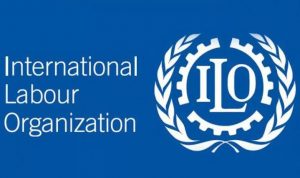Global Employment Trends for Youth: ILO

The International Labour Organisation (ILO) has released a report titled “Global Employment Trends for Youth 2022: Investing in transforming futures for young people”.
Findings Globally:
Gender Disparity in EPR:
- Young women exhibited a much lower Employment-to-Population ratio (EPR), showing that young men are almost 1.5 times more likely than young women to be employed.
- In 2022, 27.4 % of young women globally are projected to be in employment, compared to 40.3 % of young men.
- Covid-19 Pandemic has worsened the numerous labour market challenges facing those aged between 15 and 24 years, who have experienced a much higher percentage loss in employment than adults since early 2020.
- The total global number of unemployed youths is estimated to reach 73 million in 2022, a slight improvement from 2021 but still six million above the pre-pandemic level of 2019.
- The recovery in youth unemployment is projected to diverge between low- and middle-income countries on the one hand and high-income countries on the other.
- High income countries are the only ones expected to achieve youth unemployment rates close to those of 2019 by the end of 2022.
- Meanwhile, in the other country income groups, the rates are projected to remain more than 1% above their pre-crisis values.
- Young people were well-placed to benefit from the expansion of the so-called green and blue economies, centred around the environment and sustainable ocean resources respectively.
- An additional 8.4 million jobs may be created for young people by 2030 through green and blue investments, notably in clean and renewable energies, sustainable agriculture, recycling and waste management.
- Achieving universal broadband coverage by 2030 may lead to a net increase in employment of 24 million new jobs worldwide, of which 6.4 million would be taken by young people.
- Investments in care sectors would create 17.9 million more jobs for young people by 2030.
Findings Related to India:
- The youth employment participation rate declined by 0.9 % over the first nine months of 2021 relative to its value in 2020, while it increased by 2 % for adults over the same time period.
- The situation is particularly severe for very young people aged 15-20 years.
- Indian young women experienced larger relative employment losses than young men in 2021 and 2022.
- In general, the high youth employment losses in India drive up the global average employment losses.
- Young Indian men account for 16% of young men in the global labour market, while the corresponding share for young Indian women is just 5%.
- School closures lasted 18 months and among the 24-crore school-going children, only 8% of such children in rural areas and 23% in urban areas had adequate access to online education.
- Given the deeply unequal access to online resources in developing countries, children from socio-economically disadvantaged families, which are the large majority, had almost no access to education.
- School closures not only prevented new learning, but also led to the phenomenon of “learning regression”, that is, children forgetting what they had learned earlier.
- In India, 92% of children on average lost at least one foundational ability in language and 82% lost at least one foundational ability in mathematics.
- The study found out that teachers in non-state schools are often paid significantly less than those in state schools.
- Teachers in low-fee private schools in India, Kenya, Nigeria and Pakistan are paid between one eighth and one half of what their counterparts in the state sector receive.




